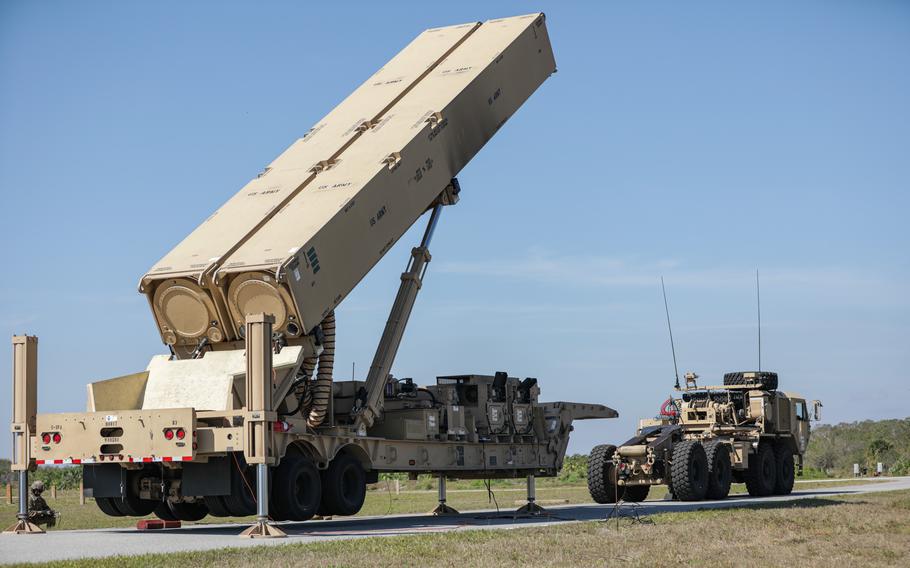
A U.S. soldier lifts the hydraulic launching system on a long-range hypersonic weapon during testing at Cape Canaveral Space Force Station, Fla., March 3, 2023. (Chandler Coats/U.S. Army)
WASHINGTON — The Pentagon’s inability to share more details openly with Congress and the public about its progress with hypersonic weapons development could be contributing to increased costs and troubles managing risks, according to a recent federal watchdog report.
Six hypersonic weapons being developed by the Army, Air Force and Navy were reviewed by the Government Accountability Office, assessing development, cost estimates and risk management. A hypersonic weapon can travel at speeds over Mach 5, maneuver in flight and is intended to strike a target from thousands of miles away.
The Defense Department does provide some information to lawmakers, though it is “not comprehensively communicating and reporting to Congress its progress on managing risks,” the GAO said in a report released Monday.
Efforts to develop hypersonic weapons that can be launched on the ground, in the air and at sea accelerated in 2018 and 2019 to compete with similar efforts of China and Russia. But the Pentagon “has yet to field its first operational” hypersonic weapons system.
“Reporting comprehensive information would enable Congress to better understand and oversee” the programs, the GAO said.
The delivery of the Army’s long-range hypersonic weapon, which launches from a truck, was pushed from 2023 to at least late 2024 due to difficulties discovered in flight testing. The system has racked up a $10.3 billion price tag.
The Air Force also extended its five-year prototyping time frame into 2024 for its air-launched, rapid-response weapon after mixed flight test results. It is expected to cost $1.2 billion, according to its 2019 estimate.
A hypersonic cruise missile being developed by the Air Force is estimated to cost $1.9 billion. The weapon system, which would be fired from a fighter jet, is not scheduled to be fielded until mid-2027.
A hypersonic air-launched, anti-surface warfare system developed by the Navy is estimated to cost $1.5 billion. The Navy is also in the early stages of developing an aeroballistic missile that would launch from surface warships. Both weapons systems are scheduled to be fielded in 2029.
The costs and risks associated with a $30 billion hypersonic Navy weapon in the works, dubbed a conventional prompt strike, are better understood than those of the other five weapons in development, the GAO said, but the program is still limited by the Defense Department’s experience in designing, producing and testing hypersonic weapons. The program relies heavily on Navy decision-makers as subject-matter experts, whose input the GAO said could be prone to bias. The hypersonic weapon is being designed to launch from Zumwalt-class surface ships and Virginia-class submarines.
“Without comprehensive enterprise-level reporting, Congress will have an incomplete or fragmented perspective on the risks DOD has identified, the actions it is taking to address them or the costs that these actions entail,” the report read.
The GAO made 10 recommendations to the Defense Department, including increasing the incorporation of feedback from users into system designs, improving the Navy’s conventional prompt strike cost estimate and expanding enterprise-level reporting activities.